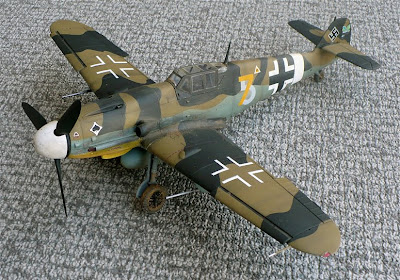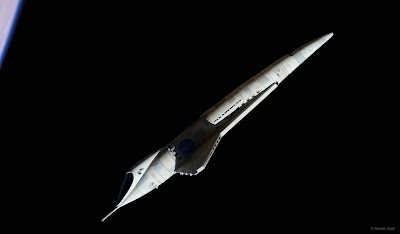
Here is my composite image of Moebius Models 1/160 scale Pan American Space Clipper (Orion III) from 2001 a space odyssey orbiting the earth.
Images of the model can be seen here.







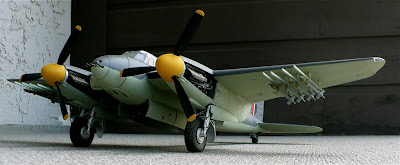







The FB Mk VI, which first flew on 1 June 1942, was powered by two 1,460 hp (1,088 kW) Merlin 21s or 1,635 hp (1,218 kW) Merlin 25s, and introduced a re-stressed and reinforced "basic" wing structure capable of carrying single 250 lb (115 kg) or 500 lb (230 kg) bombs on racks housed in streamlined fairings under each wing, or up to eight RP-3 25lb or 60 lb rockets. In addition fuel lines were added to the wings to enable single 50 gal (227l) or 100 gal (455l) drop tanks to be carried under each wing. The usual fixed armament was four 20mm Hispano Mk.II cannon and four .303 (7.7 mm) Browning machine guns, while two 250 lb (115 kg) or 500 lb (230 kg) bombs could be carried in the bomb bay. Unlike the F Mk II, the ventral bay doors were split into two pairs, with the forward pair being used to access the cannon, while the rear pair acted as bomb bay doors. The maximum fuel load capable of being carried was 719.5 gal (3,271l) distributed between 453 gal (2,059l) internal fuel tanks, plus two overload tanks, each of 66.5 gal (302l) capacity, which could be fitted in the bomb bay, and two 100 gal (455l) drop tanks. All-out level speed is often given as 368 mph (592 km/h), however this speed applies to aircraft fitted with saxophone exhausts. The test aircraft (HJ679) fitted with stub exhausts was found to be performing below expectations. It was returned to de Havilland at Hatfield where it was serviced. Its top speed was then tested and found to be 384 mph (618 km/h), in line with expectations. 2,298 FB Mk VIs were built, nearly one-third of Mosquito production. 18 built by Airspeed Ltd were eventually modified to become FB.XVIIIs. Two were converted to TR.33 carrier-borne, maritime strike prototypes.
The FB Mk VI proved capable of holding its own with single-engine fighter aircraft. For example, on 15 January 1945 Mosquito FB Mk VIs of 143 Squadron were engaged by 30 Focke-Wulf Fw 190s from Jagdgeschwader 5: five Mosquitos were lost but five Fw 190s were shot down in return, and an armed trawler and two merchant ships were sunk.






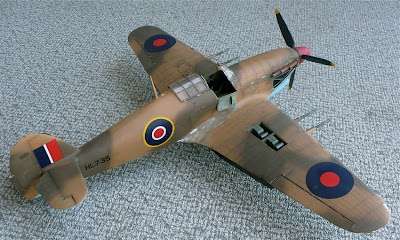



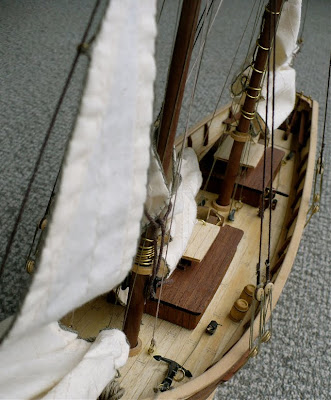
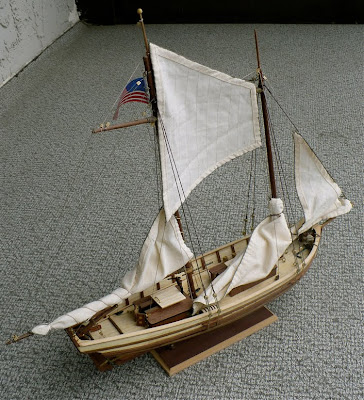
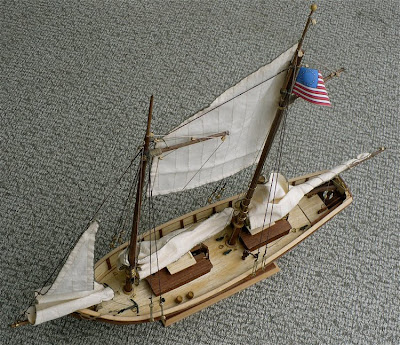









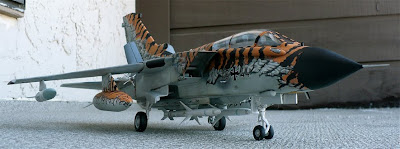

The Panavia Tornado is a family of twin-engine, variable-sweep wing combat aircraft, which was jointly developed and manufactured by the United Kingdom, West Germany and Italy. There are three primary variants of the Tornado; the Tornado IDS (interdictor/strike) fighter-bomber, the suppression of enemy air defences Tornado ECR (electronic combat/reconnaissance) and the Tornado ADV (air defence variant) interceptor.
The Tornado was developed and built by Panavia Aircraft GmbH, a tri-national consortium consisting of British Aerospace (previously British Aircraft Corporation), MBB of West Germany, and Aeritalia of Italy. It first flew on 14 August 1974 and was introduced into service in 1979–1980. Due to its multirole nature, it was able to replace several different fleets of aircraft in the adopting air forces. The Royal Saudi Air Force (RSAF) become an export operator of the Tornado in addition to the three original partner nations. A tri-nation training and evaluation unit operating from RAF Cottesmore, the Tri-National Tornado Training Establishment, maintained a level of international cooperation beyond the production stage.
The Tornado was used by the Royal Air Force (RAF), Italian Air Force and Royal Saudi Air Force during the 1991 Gulf War, in which the Tornado conducted many low-altitude penetrating strike missions. The Tornados of various operators were used in conflicts in the former Yugoslavia during the Bosnian War and Kosovo War, Iraq during the Gulf War and the Iraq War, Libya during the Libyan civil war, as well as smaller roles in Afghanistan and Yemen. Including all variants, a total of 992 aircraft were built.
On 26 March 1969, four partner nations – United Kingdom, Germany, Italy and the Netherlands, agreed to form a multinational company, Panavia Aircraft GmbH, to develop and manufacture the MRCA. The project's aim was to produce an aircraft capable of undertaking missions in the tactical strike, reconnaissance, air defence, and maritime roles; thus allowing the MRCA to replace several different aircraft then in use by the partner nations.Various concepts, including alternative fixed-wing and single-engine designs, were studied while defining the aircraft. The Netherlands pulled out of the project in 1970, citing that the aircraft was too complicated and technical for the RNLAF's preferences, which had sought a simpler aircraft with outstanding manoeuvrability.[12] An additional blow was struck by the German requirement reduced from an initial 600 aircraft to 324 in 1972.
When the agreement was finalised, the United Kingdom and West Germany each had a 42.5% stake of the workload, with the remaining 15% going to Italy; this division of the production work was heavily influenced by international political bargaining. The front fuselage and tail assembly was assigned to BAC (now BAE Systems) in the United Kingdom; the centre fuselage to MBB (now EADS) in West Germany; and the wings to Aeritalia (now Alenia Aeronautica) in Italy. Similarly, tri-national worksharing was used for engines, general and avionic equipment. A separate multinational company, Turbo-Union, was formed in June 1970 to develop and build the RB199 engines for the aircraft, with ownership similarly split 40% Rolls-Royce, 40% MTU, and 20% FIAT.
At the conclusion of the project definition phase in May 1970, the concepts were reduced to two designs; a single seat Panavia 100 which West Germany initially preferred, and the twin-seat Panavia 200 which the RAF preferred and which would become the Tornado. The aircraft was briefly called the Panavia Panther, the project soon coalesced towards the two-seat option.In September 1971, the three governments signed an Intention to Proceed (ITP) document, at which point the aircraft was intended solely for the low-level strike mission, where it was viewed as a viable threat to Soviet defences in that role. It was at this point that Britain's Chief of the Defence Staff announced "two thirds of the fighting front line will be composed of this single, basic aircraft type".
Operated by Germany and Italy, the ECR is a Tornado variant devoted to Suppression of Enemy Air Defences (SEAD) missions. It was first delivered on 21 May 1990. The ECR has sensors to detect radar usage and is equipped with anti-radiation AGM-88 HARM missiles. The Luftwaffe's 35 ECRs were delivered new, while Italy received 16 converted IDSs. Italian Tornado ECRs differ from the Luftwaffe aircraft as they lack of build-in reconnaissance capability and use RecceLite reconnaissance pods, also only Luftwaffe ECRs are equipped with RB199 Mk.105 engine which has a slightly higher thrust rating. The German ECRs do not carry a cannon.






The McDonnell Douglas F-4 Phantom II is a tandem (two-seat), twin-engined, all-weather, long-range supersonic jet interceptor fighter/fighter-bomber originally developed for the United States Navy by McDonnell Aircraft. It first entered service in 1960 with the U.S. Navy. Proving highly adaptable, it was also adopted by the U.S. Marine Corps and the U.S. Air Force, and by the mid-1960s had become a major part of their respective air wings.
The Phantom is a large fighter with a top speed of over Mach 2.2. It can carry over 18,000 pounds (8,400 kg) of weapons on nine external hardpoints, including air-to-air and air-to-ground missiles, and various bombs. The F-4, like other interceptors of its time, was designed without an internal cannon, but later models incorporated a M61 Vulcan rotary cannon. Beginning in 1959, it set 15 world records, including an absolute speed record, and an absolute altitude record.
The F-4 was used extensively during the Vietnam War, serving as the principal air superiority fighter for both the Navy and Air Force, as well as being important in the ground-attack and reconnaissance roles by the close of U.S. involvement in the war. The Phantom has the distinction of being the last U.S. fighter flown to attain ace status in the 20th century. During the Vietnam War, the USAF had one pilot and two weapon systems officers (WSOs), and the US Navy one pilot and one radar intercept officer (RIO), achieve five aerial kills against other enemy fighter aircraft and become aces in air-to-air combat. The F-4 continued to form a major part of U.S. military air power throughout the 1970s and 1980s, being gradually replaced by more modern aircraft such as the F-15 Eagle and F-16 in the U.S. Air Force; the Grumman F-14 Tomcat and F/A-18 Hornet in the U.S. Navy; and the F/A-18 in the U.S. Marine Corps.
The F-4 Phantom II remained in use by the U.S. in the reconnaissance and Wild Weasel (suppression of enemy air defenses) roles in the 1991 Gulf War, finally leaving service in 1996. It was also the only aircraft used by both U.S. flight demonstration teams: the USAF Thunderbirds (F-4E) and the US Navy Blue Angels (F-4J). The F-4 was also operated by the armed forces of 11 other nations. Israeli Phantoms saw extensive combat in several Arab–Israeli conflicts, while Iran used its large fleet of Phantoms in the Iran–Iraq War. Phantoms remain in front line service with seven countries, and in use as an unmanned target in the U.S. Air Force. Phantom production ran from 1958 to 1981, with a total of 5,195 built, making it the most numerous American supersonic military aircraft.
On 30 December 1960, the VF-121 "Pacemakers" at NAS Miramar became the first Phantom operator with its F4H-1Fs (F-4As). The VF-74 "Be-devilers" at NAS Oceana became the first deployable Phantom squadron when it received its F4H-1s (F-4Bs) on 8 July 1961. The squadron completed carrier qualifications in October 1961 and Phantom’s first full carrier deployment between August 1962 and March 1963 aboard USS Forrestal. The second deployable U.S. Atlantic Fleet squadron to receive F-4Bs was the VF-102 "Diamondbacks", who promptly took their new aircraft on the shakedown cruise of USS Enterprise. The first deployable U.S. Pacific Fleet squadron to receive the F-4B was the VF-114 "Aardvarks", which participated in the September 1962 cruise aboard USS Kitty Hawk.
By the time of the Tonkin Gulf incident, 13 of 31 deployable Navy squadrons were armed with the type. F-4Bs from USS Constellation made the first Phantom combat sortie of the Vietnam War on 5 August 1964, flying bomber escort in Operation Pierce Arrow. The first Phantom air-to-air victory of the war took place on 9 April 1965 when an F-4B from VF-96 "Fighting Falcons" piloted by Lieutenant (junior grade) Terence M. Murphy and his RIO, Ensign Ronald Fegan, shot down a Chinese MiG-17 "Fresco". The Phantom was then shot down, apparently by an AIM-7 Sparrow from one of its wingmen.There continues to be controversy over whether the Phantom was shot down by MiG guns or whether, as enemy reports later indicated, an AIM-7 Sparrow III from one of Murphy's and Fegan's wingmen. On 17 June 1965, an F-4B from VF-21 "Freelancers" piloted by Commander Louis Page and Lieutenant John C. Smith shot down the first North Vietnamese MiG of the war.
On 10 May 1972, Lieutenant Randy "Duke" Cunningham and Lieutenant (junior grade) William P. Driscoll flying an F-4J, call sign "Showtime 100", shot down three MiG-17s to become the first American flying aces of the war. Their fifth victory was believed at the time to be over a mysterious North Vietnamese ace, Colonel Nguyen Toon, now considered mythical. On the return flight, the Phantom was damaged by an enemy surface-to-air missile. To avoid being captured, Cunningham and Driscoll flew their burning aircraft using only the rudder and afterburner (the damage to the aircraft rendered conventional control nearly impossible), until they could eject over water.
During the war, U.S. Navy F-4 Phantom squadrons participated in 84 combat tours with F-4Bs, F-4Js, and F-4Ns. The Navy claimed 40 air-to-air victories at a cost of 73 Phantoms lost in combat (seven to enemy aircraft, 13 to SAMs, and 53 to AAA). An additional 54 Phantoms were lost in mishaps.
By 1983, the F-4Ns had been completely replaced by F-14 Tomcats, and by 1986 the last F-4Ss were exchanged for F/A-18 Hornets. On 25 March 1986, an F-4S belonging to the VF-151 "Vigilantes," became the last active duty U.S. Navy Phantom to launch from an aircraft carrier, in this case, the USS Midway. On 18 October 1986, an F-4S from the VF-202 "Superheats", a Naval Reserve fighter squadron, made the last-ever Phantom carrier landing while operating aboard USS America. In 1987, the last of the Naval Reserve-operated F-4S aircraft were replaced by F-14As. The last Phantoms in service with the Navy were QF-4 target drones operated by the Naval Air Warfare Centers at NAS Point Mugu, California. These airframes were subsequently retired in 2004.

